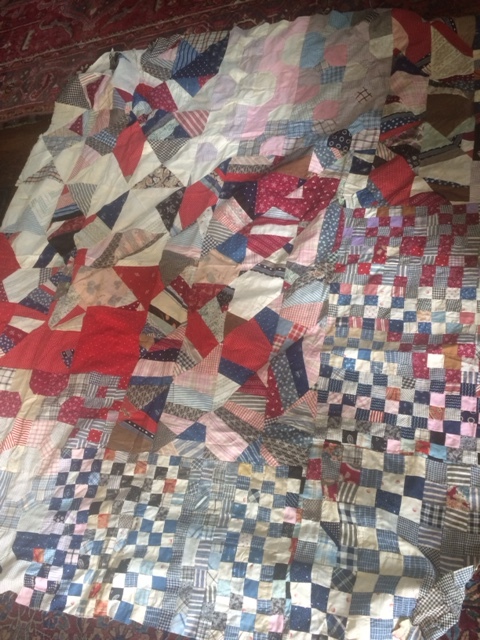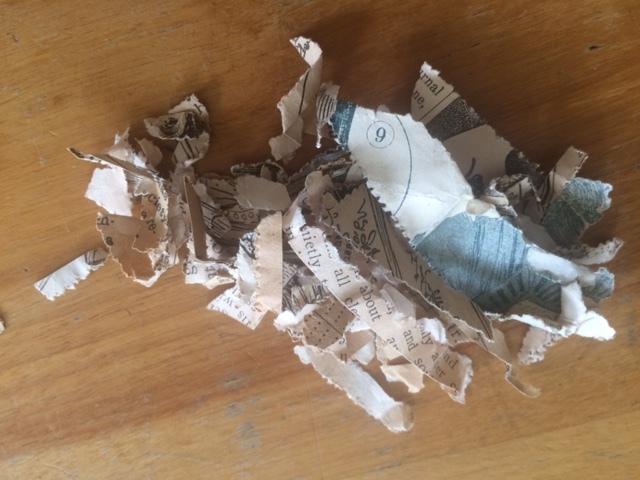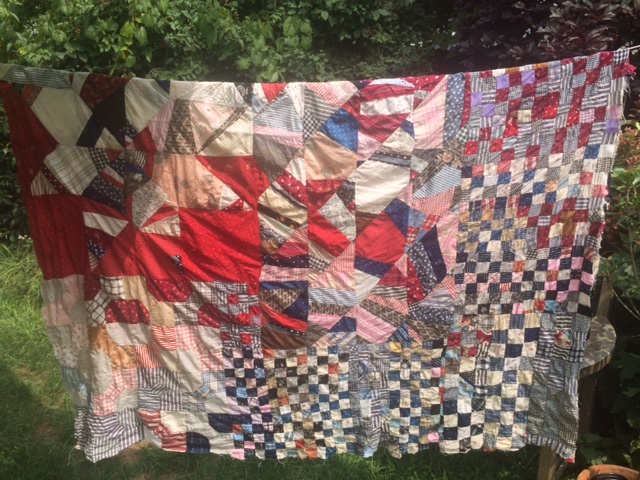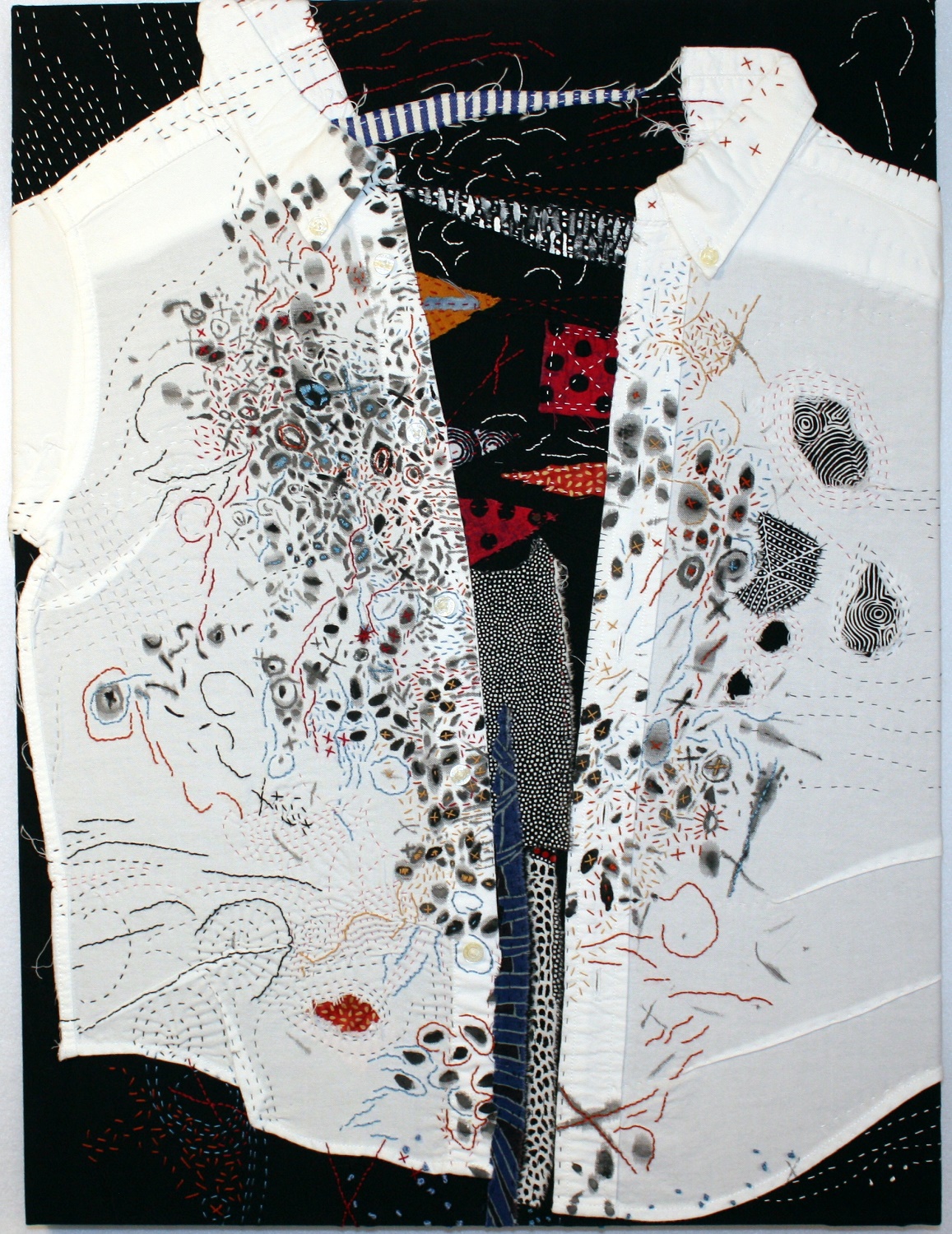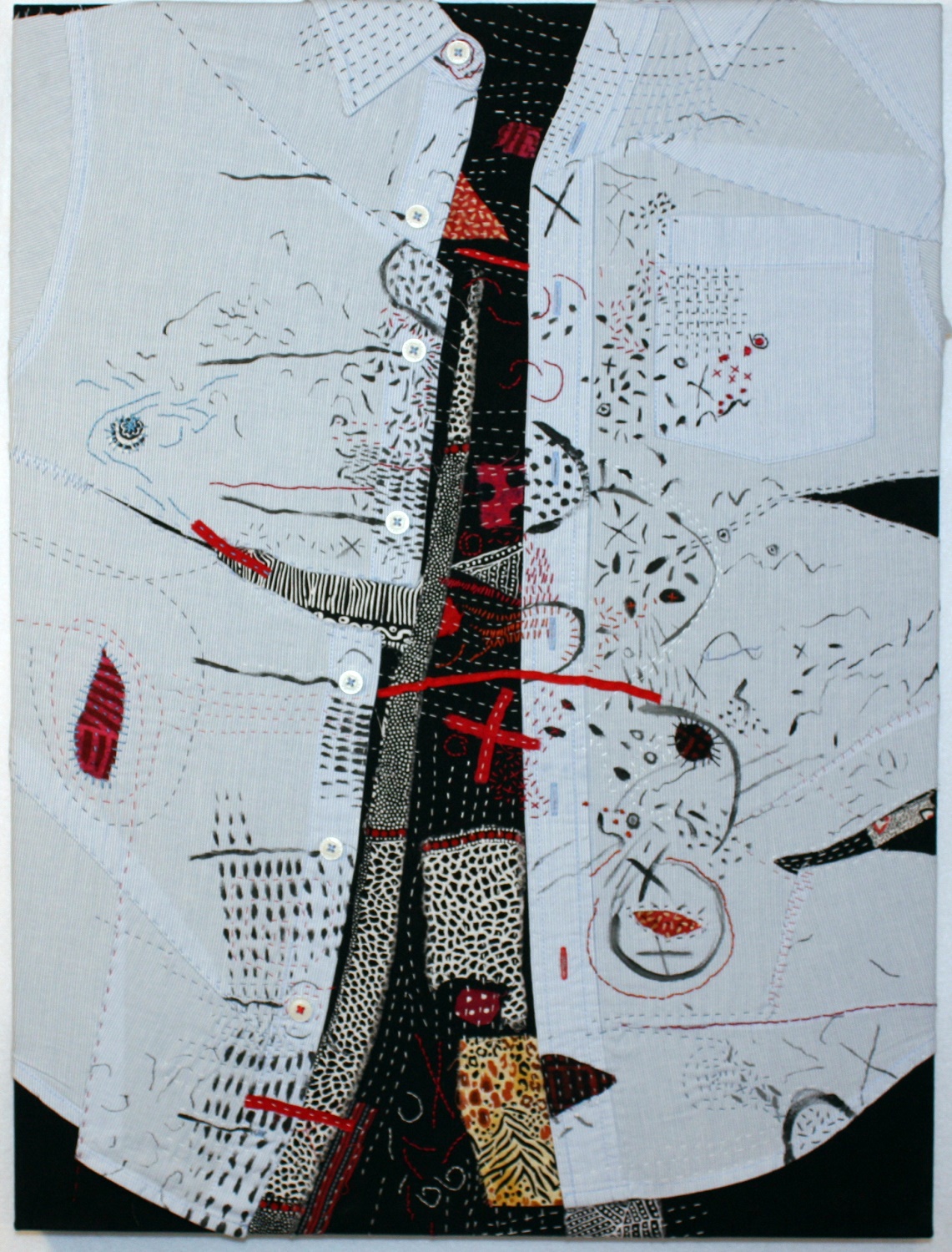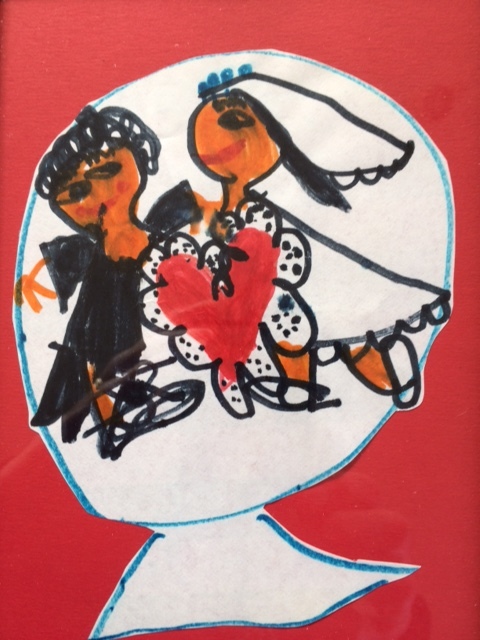Scrolling through ebay is my secret pleasure, and this unusual quilt top jumped out at me. I bid on it, and before too long it arrived at my door, in "as is" condition. I soon realized that it was paper-pieced, and very musty, with some old indigo and mourning prints. So, I picked the paper off and gave the whole thing a gentle wash. I saved the paper of course...you never know when something like this will be needed. Some of the paper looked like a bus or train timetable, one small fragment mentioned Milk St., Boston. The quilt came from Wichita, Kansas. It looks like someone put together the beginnings or leftovers from several different projects and said "good enough." Yet, it was never made into a finished quilt, so maybe not quite good enough? We'll never know, and that is what intrigues me about using repurposed textiles in my artwork. I am able to imagine new narratives in old cloth. I don't know where I will take this, but I am thinking about it.
I have two small pieces from my Out Loud series showing in South Haven, MI, at the South Haven Center For the Arts this fall. The exhibit is called WITH (re)PURPOSE, and will be on display from September 13 through November 3, 2018.
Summer Reading
These are a few titles I have enjoyed this summer: Birds of Wonder, by Cynthia Robinson; The Life List of Adrian Mandrick, by Chris White; The Nature of the Beast, by Louise Penney; Saints at the River, by Ron Rash; and a very thought-provoking read, Burial Rites, by Hannah Kent. I can't believe that summer is almost gone, I must have spent it reading and sewing...

